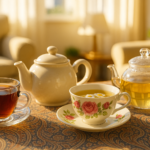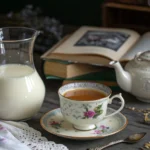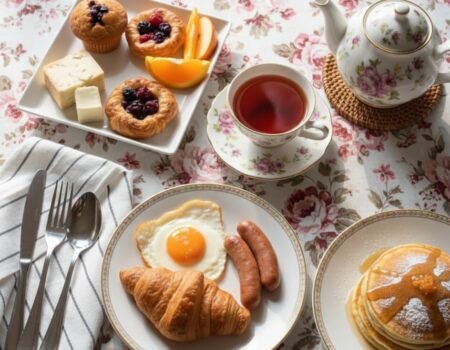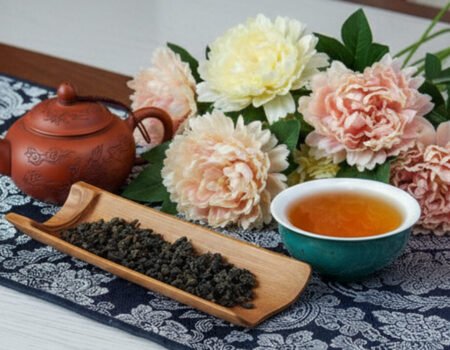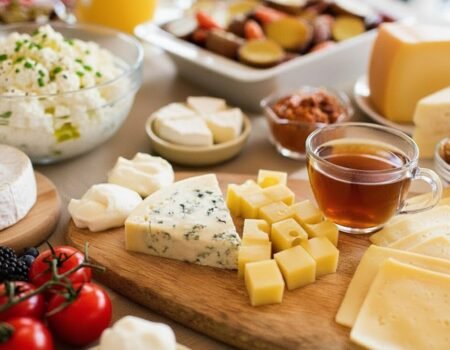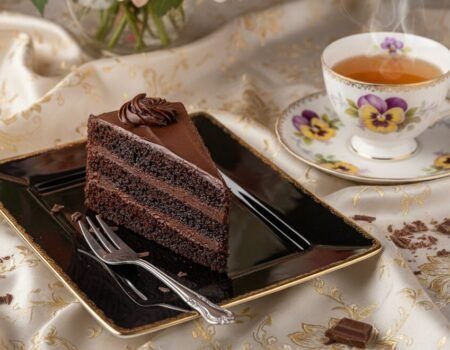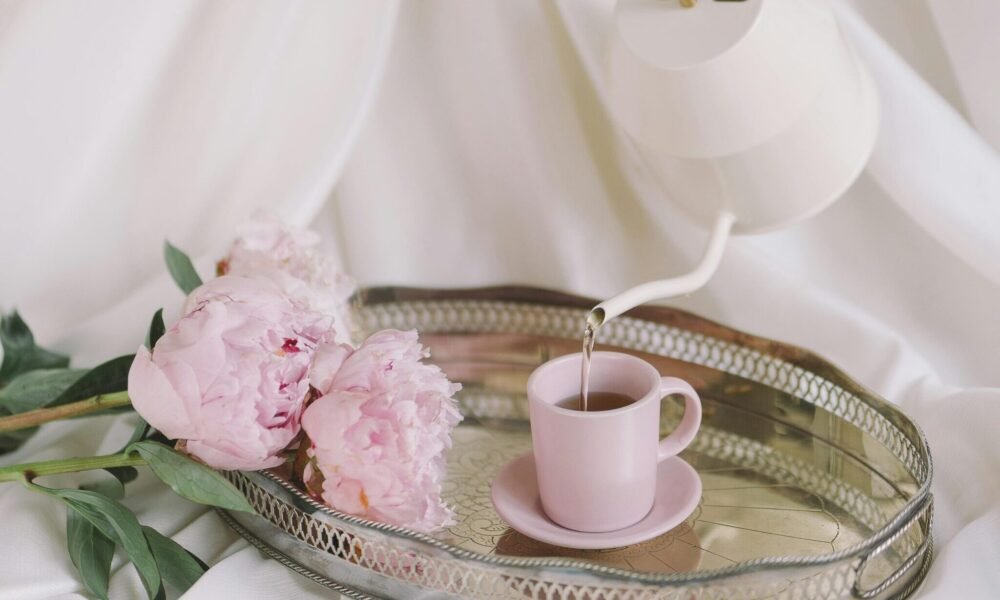
How to Brew the Best Tea: Your Ultimate Guide to the Perfect Cup of Tea
Index
Index
Learning how to brew the best tea requires understanding a few key elements that many people miss.
This guide will walk you through choosing quality loose leaf tea, using the right tools like infusers and teapots, and mastering the perfect steep time for each tea type. Your path to a perfect cuppa starts here.
Key Takeaways
- Water temperature is the most critical factor in tea brewing – black tea needs 200-212°F water while green tea requires cooler 160-180°F water to avoid bitterness.
- Loose leaf tea provides more complex flavors and health benefits than tea bags, though it costs slightly more per cup compared to the cheaper bagged options.
- Steeping time varies by tea type: black tea needs 3-5 minutes, green tea 1-2 minutes, white tea 2-3 minutes, and herbal teas 5+ minutes for optimal flavor.
- Many tea drinkers found that bottled spring water creates better flavor than filtered water, especially with green tea varieties.
- Common brewing mistakes include over-steeping (which extracts too many tannins) and not measuring properly (one teaspoon of loose tea per cup is the standard starting point).
Choosing the Right Tea

Picking the right tea sets the stage for a perfect brew. You’ll find a world of difference between loose leaf and bagged options in both taste and quality.
Loose Leaf vs. Tea Bags
Choosing between loose leaf tea and tea bags impacts both flavor and experience. Tea enthusiasts often debate which option provides the best cup, with clear advantages for each method. This comparison highlights the key differences to help you make an informed choice.
| Comparison Factor | Loose Leaf Tea | Tea Bags |
|---|---|---|
| Flavor Quality | Much more flavorful with complex taste profiles | Limited flavor due to smaller leaf fragments |
| Health Benefits | Higher concentration of beneficial properties | Fewer beneficial compounds due to processing |
| Convenience | Requires infuser or strainer; more preparation time | Ready to use; perfect for on-the-go drinking |
| Environmental Impact | More eco-friendly with less packaging waste | Creates more waste from bags, strings, and packaging |
| Cost Per Cup | Slightly more expensive | Varies but often cheaper per unit with lower quality |
| Leaf Quality | Whole or large pieces of leaves with visible quality | Dust and fannings (tea particles) in standard bags |
| Middle Option | Tea sachets: Higher quality leaves than standard bags in pyramid-shaped mesh pouches | |
Tea sachets present a compromise between the two main options. These larger mesh bags contain better quality leaves than standard tea bags while maintaining convenience. Many premium brands now offer this format for tea lovers seeking both quality and simplicity.
Whole leaf teas allow full expansion during steeping. The leaves need room to unfurl completely, releasing their full flavor profile. Standard tea bags contain crushed leaves that extract quickly but lack depth and complexity.
Fresh leaves make all the difference in your cup. Loose leaf teas typically preserve more essential oils and aromatic compounds that create memorable taste experiences. The improved flavor justifies the extra preparation time for many dedicated tea drinkers.
Selecting High-Quality Tea
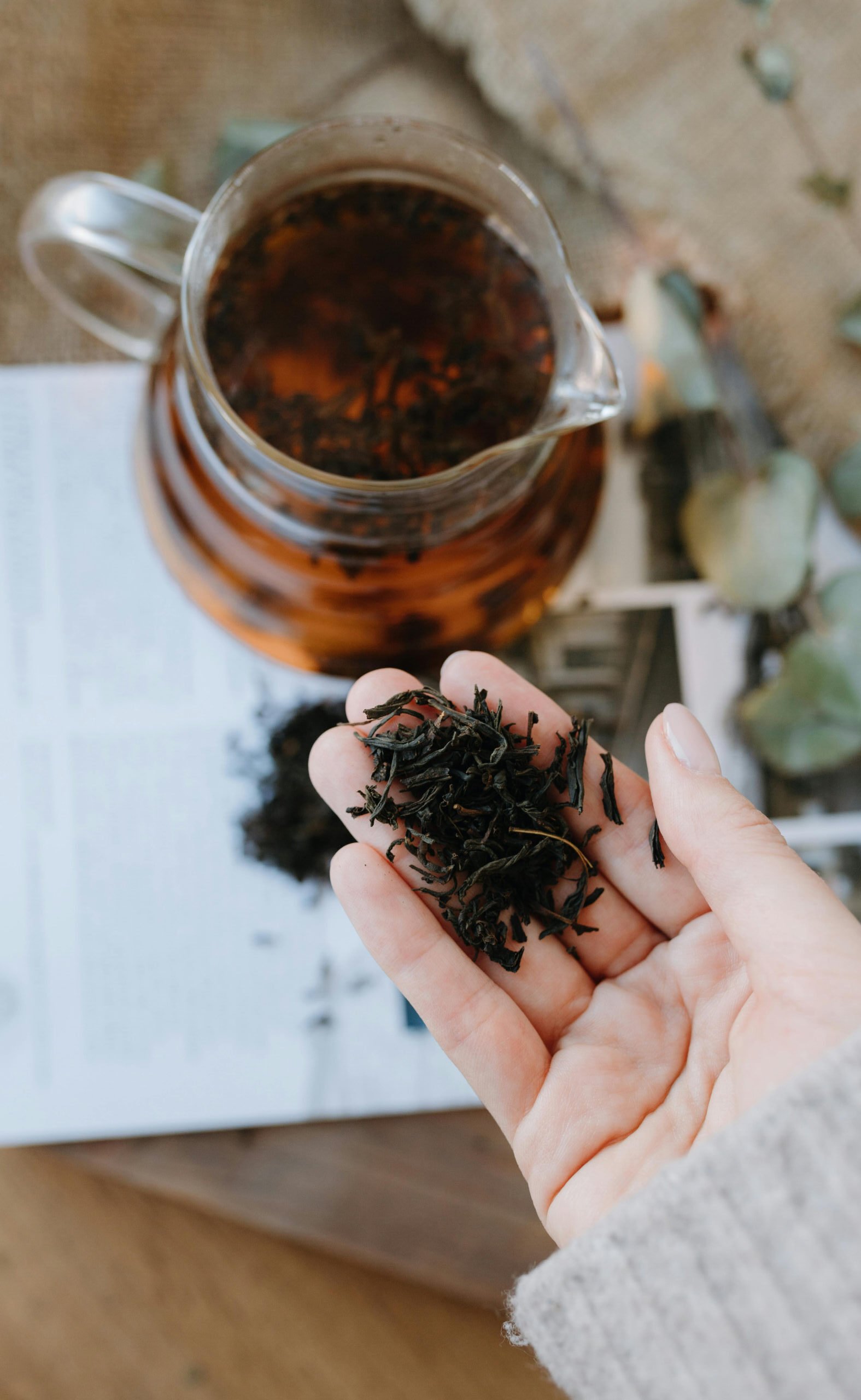
High-quality tea stands out with whole, unbroken leaves that show a uniform appearance. The best teas reveal their quality before brewing through their rich, aromatic fragrance. Look for loose leaf tea rather than tea bags for superior flavor.
True teas come from the Camellia sinensis plant and vary based on oxidation levels. You can spot good tea by examining the dry leaves – they should feel substantial and appear consistent in size and shape.
Tea quality differs greatly between varieties like oolong, darjeeling, and pu-erh. Each type requires specific inspection points. For green teas, seek bright colors and fresh scents.
Black teas should display full, twisted leaves with golden tips. White teas need downy, silvery buds. The packaging matters too – quality tea comes in containers that block light and air to preserve freshness.
Many tea shops offer samples, so try before buying a large amount.
Preparing Your Tools
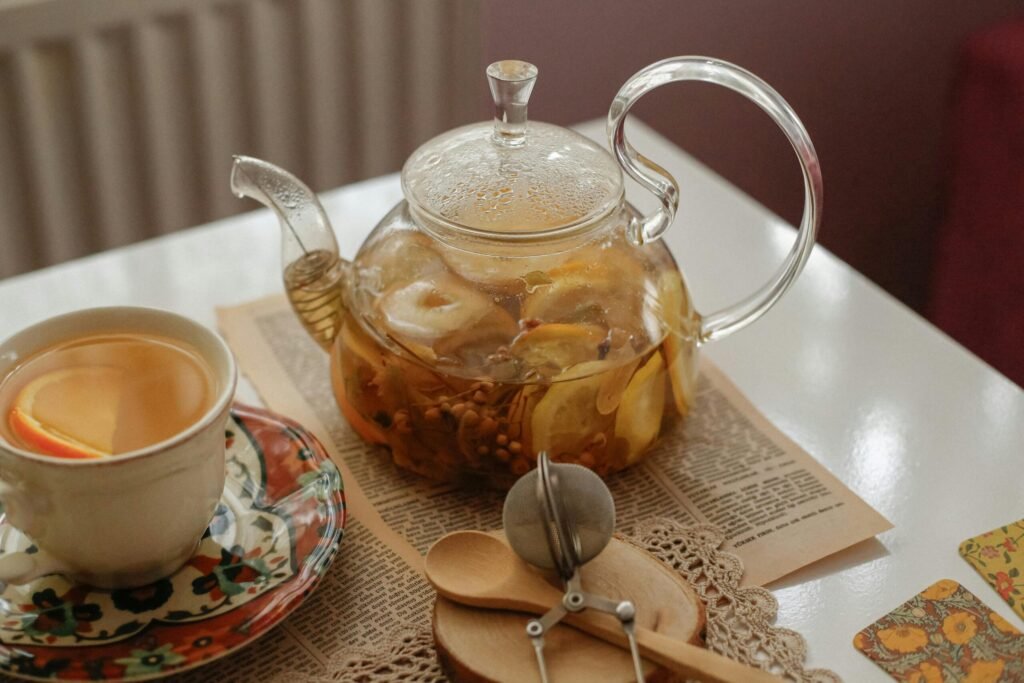
The right tools make all the difference in your tea brewing journey. You’ll need a good teapot, infuser, or mug as your main vessel, plus a few key items to help extract the best flavors.
Teapot, Infuser, or Mug
Your brew tools make a big difference in tea quality. Free-standing metal infusers work best for loose tea in any cup size, giving you freedom to match your mug to your mood. Tea vessels affect how quickly your drink cools and how strong the flavors become.
A quality teapot holds heat longer for black teas, while glass mugs let you watch green tea leaves unfurl. Infusers ensure even flavor extraction, preventing bitter spots or weak patches in your cup.
Each brewing vessel serves a specific purpose in your tea journey. Teapots excel at making multiple cups, perfect for sharing oolong or pu’er with friends. Infuser baskets give tea leaves room to expand fully, creating better flavor than cramped tea balls.
Your personal taste matters too – some people enjoy the ritual of a cast iron pot, while others prefer the quick simplicity of an in-mug strainer for their morning cup of earl grey.
The right tool helps you control both steeping time and water temperature for perfect results.
Essential Accessories
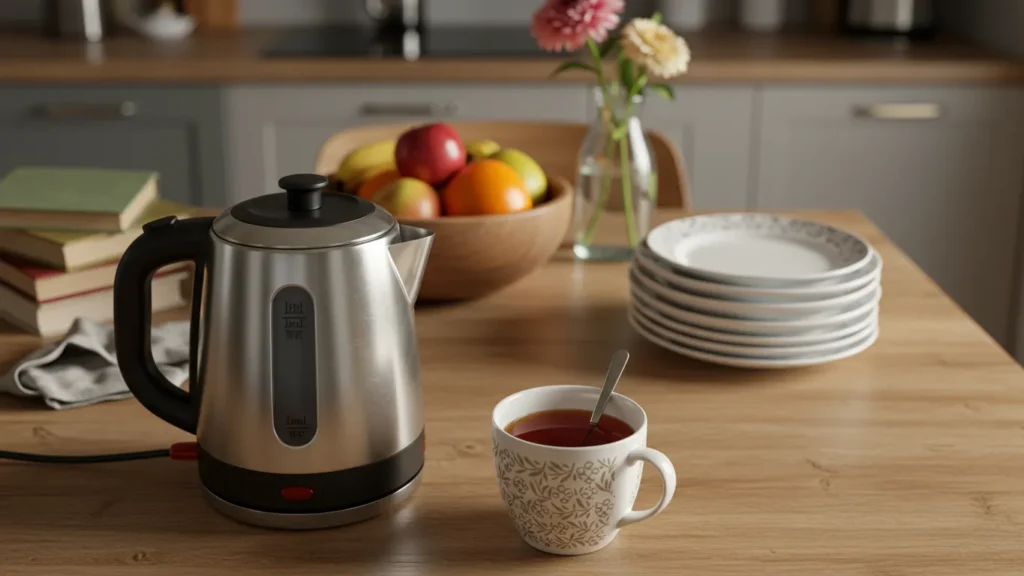
Beyond choosing the right teapot or infuser, you’ll need a few key accessories to perfect your tea brewing routine. These tools make a big difference in both convenience and flavor quality.
- Electric kettles provide precise temperature control for different tea types, ensuring you never scorch delicate leaves with water that’s too hot.
- Tea strainers catch loose leaves when pouring from a teapot, giving you a smooth, debris-free cup every time.
- Tea timers help track steeping duration, preventing the bitter taste that comes from leaving tea in hot water too long.
- Measuring spoons ensure you use the right amount of tea leaves for a balanced flavor profile.
- Storage containers with airtight seals keep tea fresh by blocking moisture, light, and air that can degrade quality.
- Tea thermometers give exact water temperature readings for tea types that need specific heat levels.
- Warming plates maintain the ideal drinking temperature throughout your tea session.
- Basket strainers fit inside most mugs and teapots, allowing leaves to expand fully for maximum flavor extraction.
- Tea scoops made from bamboo or metal help portion loose leaf tea without crushing delicate leaves.
- Filtered water pitchers remove impurities that can affect tea taste, creating a cleaner base for brewing.
The Perfect Water Temperature and Steeping Time
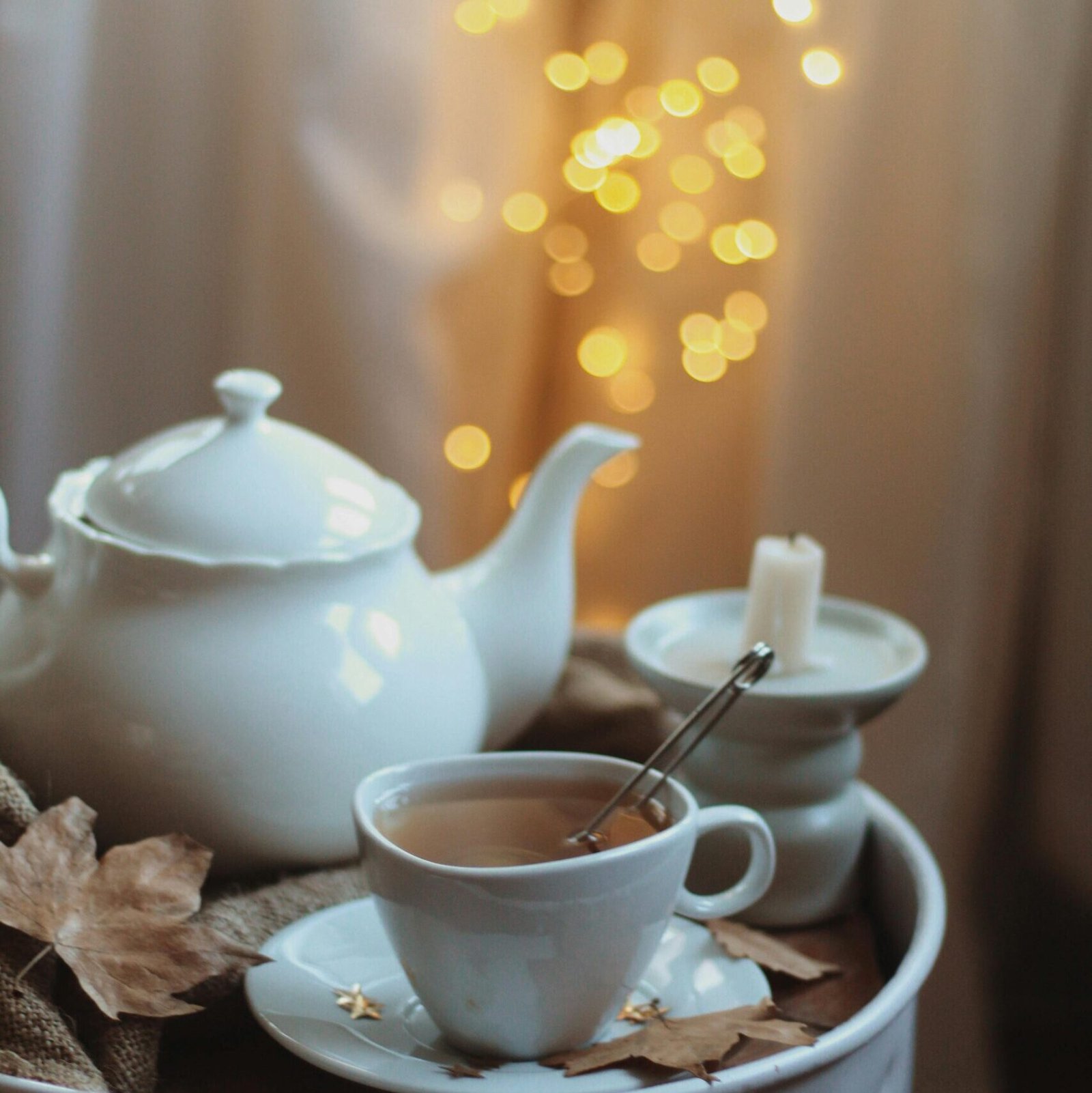
Getting the water temperature right makes a huge difference in your tea’s taste. Different types of tea need specific heat levels and steep times to bring out their best flavors.
Temperature Guidelines for Different Teas
Tea temperature plays a critical role in extracting the perfect flavor from your leaves. Each tea variety requires specific heat levels to release its unique character without bitterness. Water that’s too hot can scorch delicate leaves, while water that’s too cool fails to draw out the full taste profile.
| Tea Type | Water Temperature | Steeping Time |
|---|---|---|
| White Tea | 160-185°F | 1-3 minutes |
| Green Tea | 140-185°F | 1-3 minutes |
| Black Tea | 200-212°F | 3-5 minutes |
| Darjeeling Tea | 185-195°F | 2-4 minutes |
| Oolong Tea | 185-205°F | 3-5 minutes |
| Herbal Tea (Tisane) | 200°F | 5-7 minutes |
Delicate white and green teas need cooler water to prevent bitterness. Black teas withstand and actually benefit from near-boiling water. Darjeeling requires slightly lower temperatures than typical black teas due to its subtle flavor notes. Oolong sits between green and black teas in its temperature needs. Herbal infusions can handle full boiling water since they contain no actual tea leaves.
Many tea lovers use a thermometer for precise readings. Digital versions offer the most accuracy for achieving these specific ranges. Some electric kettles now come with preset temperature buttons for various tea types, making the process much simpler.
Recommended Steeping Durations

Now that you understand the right water temperatures for each tea variety, let’s focus on how long to steep your leaves. Perfect timing extracts maximum flavor without unwanted bitterness.
Steeping duration directly impacts your tea’s taste profile. The ideal time varies significantly based on your chosen tea type. Testing many cups has helped determine these optimal steeping times.
| Tea Type | Steeping Time | Notes |
|---|---|---|
| Black Tea | 3-5 minutes | Longer steeps produce stronger flavor |
| Green Tea | 1-2 minutes | Short steep prevents bitterness |
| White Tea | 2-3 minutes | Delicate leaves need gentle treatment |
| Oolong Tea | 3-5 minutes | Multiple infusions possible |
| Pu-erh Tea | 5 minutes | Can withstand longer steeping |
| Herbal Tea | 5+ minutes | Doesn’t become bitter with extended steeping |
Watch your tea closely during initial brews. Different brands may need slight adjustments to these guidelines. Steep time affects both flavor strength and caffeine content. Shorter steeps typically yield less caffeine.
Many tea enthusiasts use a timer for consistent results. This simple tool prevents both under-extraction and bitter over-steeping. Start with these recommendations, then adjust to match your personal taste preferences.
Note that water quality and leaf-to-water ratio also influence steeping results. Fresh, filtered water and proper measurements create the foundation for perfect timing.
Expert Tips for Enhancing Flavor
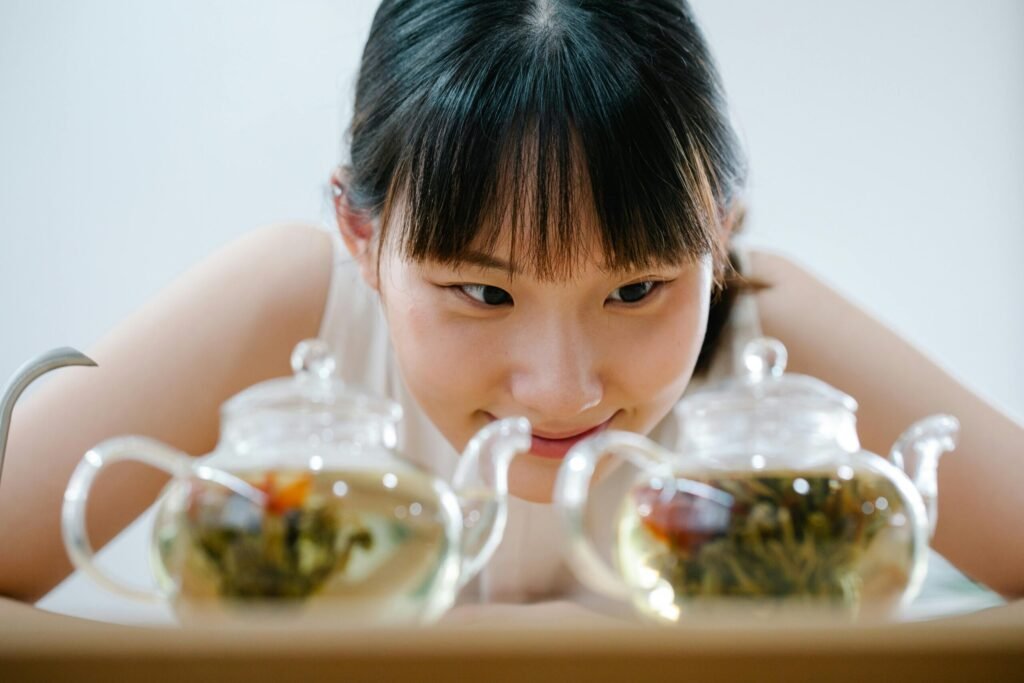
The right tricks can turn an average cup of tea into a flavor masterpiece. Learn how small changes like filtered water and natural sweeteners can make your tea taste better than ever.
Using Filtered Water
Filtered water might not be your best choice for brewing tea, despite popular advice. Tests show that bottled spring water creates better flavor profiles than filtered water. Many tea drinkers noticed that filtered water produced less appealing tastes, especially with green tea varieties.
Water quality matters because high mineral content can add unwanted flavors to your cup, while distilled water lacks the minerals that help develop complex tea notes.
You can improve your brew by testing different water sources with your favorite tea leaf types. Pour hot water from various sources over identical amounts of the same tea and compare results.
Your personal preference should guide your final choice. Some tea lovers prefer the clean taste from filtered systems, while others enjoy the natural minerals in spring water that enhance certain tea varieties like pu’er or oolong.
Customizing with Milk, Lemon, or Honey

Clean water sets the stage for your perfect cup, but adding the right extras can transform your tea experience. Lemon juice cuts through bitterness in green teas while bringing out the deep flavors in black varieties.
This citrus boost also adds Vitamin C to your drink, making it both tasty and healthy. Honey works as a natural sweetener that brings antioxidants and has a lower glycemic index than sugar.
Many tea lovers enjoy the smooth taste it adds to stronger brews.
Plant-based milk options help keep the good stuff in your tea working. Almond, oat, or coconut milk preserve the antioxidant activity while adding creaminess to your cup. For chai or robust black teas, a splash of milk balances the bold flavors.
Each addition creates a unique taste profile that you can adjust to match your mood or the specific tea type you’re brewing.
Common Mistakes to Avoid
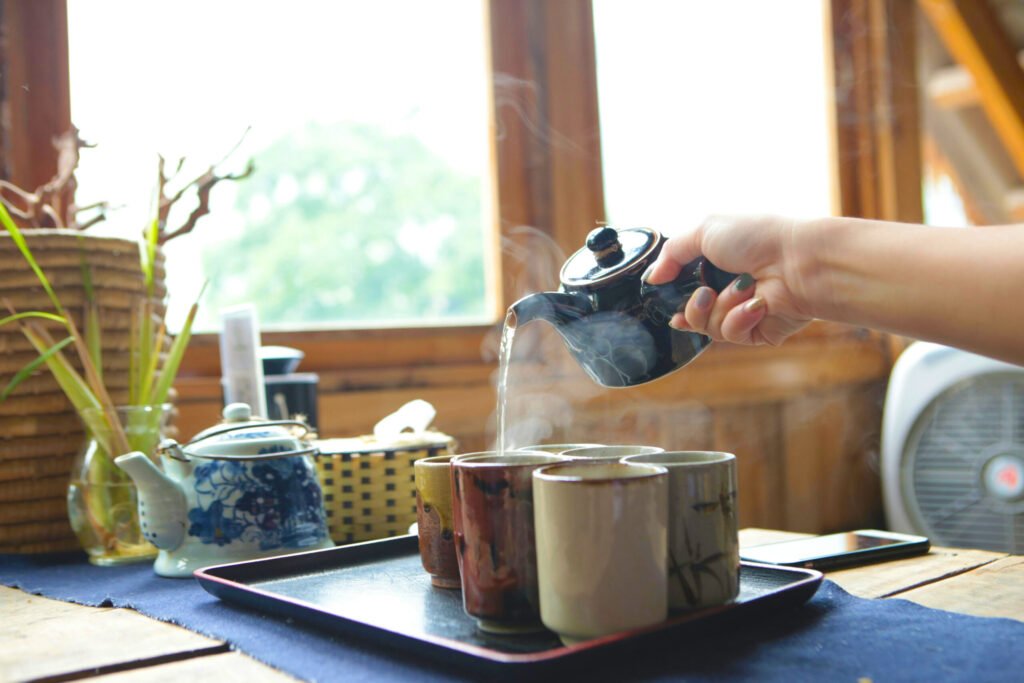
Tea brewing errors can ruin your perfect cup in seconds. Learn the top mistakes that turn great tea into bitter disappointment.
Over-Steeping or Using Boiling Water
Over-steeping your tea creates a bitter, harsh cup that masks the true flavors. Most people leave their tea bags or loose leaves in hot water too long, thinking it makes a stronger brew.
It doesn’t – it simply extracts too many tannins. Green and white teas suffer most from boiling water, which burns their delicate leaves. You need cooler water (around 175°F) for these types, while black tea can handle hotter temperatures.
A kitchen timer helps track steeping time perfectly. Many tea drinkers pour boiling water directly onto white or green tea leaves, then wonder why their cup tastes bitter and astringent instead of sweet and fresh.
Not Measuring Properly

Beyond using the right water temperature, proper measurement plays a huge role in brewing perfect tea. Many tea lovers skip the measuring step, eyeballing tea leaves or using random spoons instead of proper teaspoons.
This casual approach leads to major flavor problems. Too many tea leaves create bitter, undrinkable brews, while too few result in weak, flavorless cups that waste good tea.
Accurate measurements matter for every type of tea. For loose leaf teas, use one teaspoon per cup as your starting point, adjusting based on the specific variety. Tea bags already contain measured amounts, but still need the right water ratio.
A standard mug needs about 8 ounces of water for optimal extraction. Using a kitchen scale for loose tea gives even better results than volume measurements, especially for larger leaf varieties that don’t fit neatly in spoons.
Your tea kettle or teapot should have volume markings to help you add the exact amount of water needed.
Conclusion
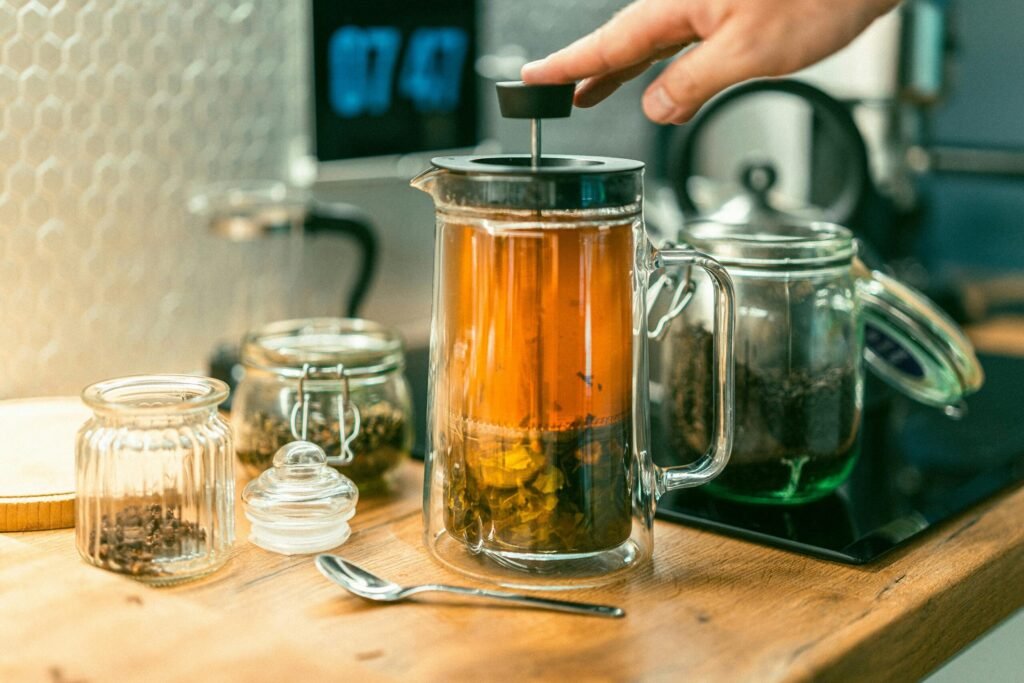
Tea brewing combines simple steps with careful attention to detail. Your perfect cup starts with quality leaves, proper water temperature, and the right steeping time. Small changes make big differences – filtered water enhances flavor while measuring precisely prevents bitterness.
Try different brewing methods like cold brew or gaiwan to discover new dimensions in your favorite teas. The joy of tea lies not just in drinking but in the ritual of preparation that connects you to centuries of tradition across China and beyond.
Master these basics, then explore your own preferences to create your signature cup every time.
FAQs
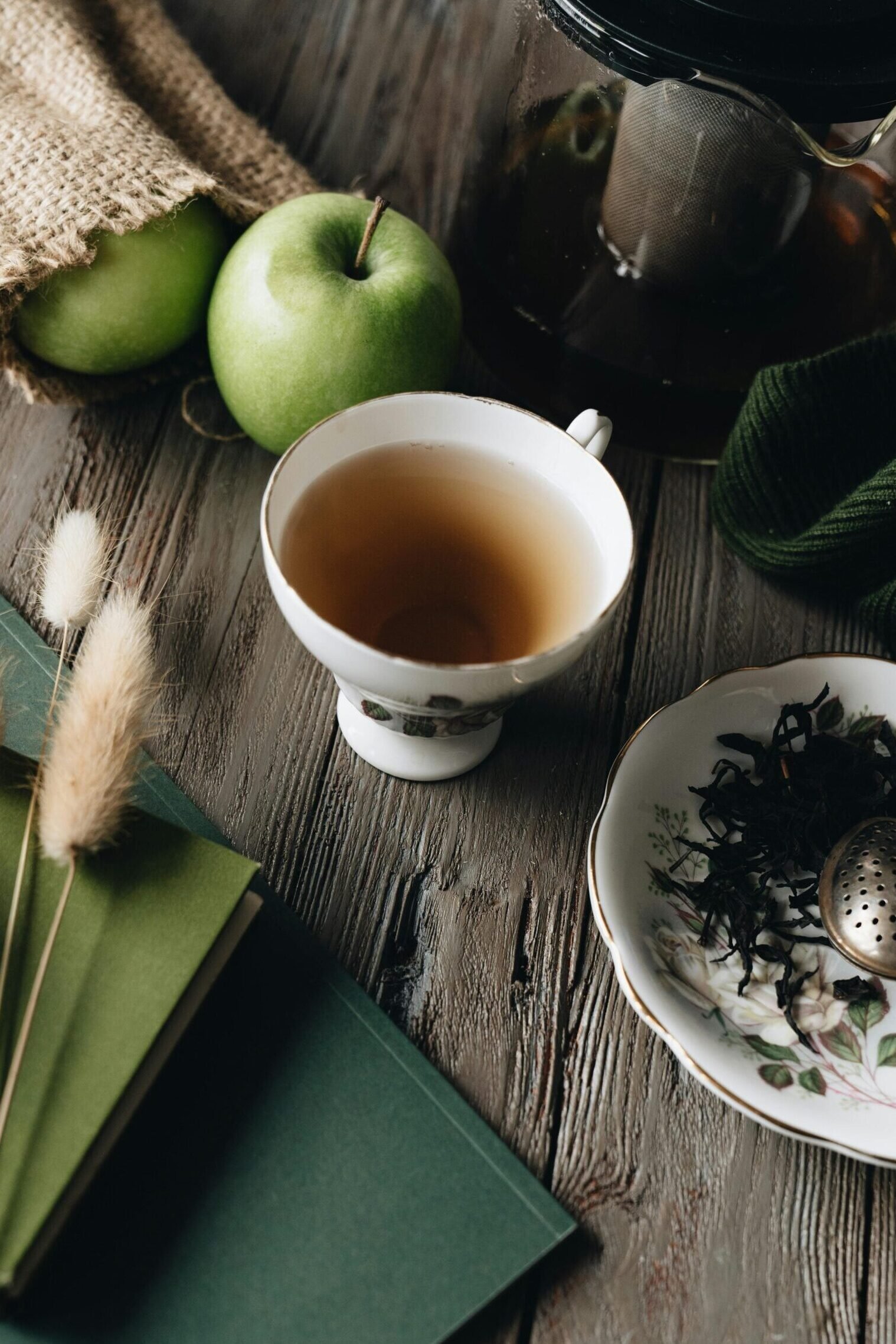
1. What is the best way to brew hot tea?
To make a good cup of hot tea, bring water to a boil and pour it over the leaves or teabag. Let it steep for 3-5 minutes depending on the type of tea. The steeping time matters most for getting the right flavor.
2. How do I make cold brew tea?
Cold brew tea needs time rather than heat. Place tea leaves in cold water and let them sit in the fridge for 6-12 hours. Strain through a sieve when ready to drink.
3. Does the type of water matter when brewing tea?
Yes. Fresh, oxygen-rich water makes better tea. Water quality affects the final taste just as much as the tea itself.
4. Can I use a French press or coffee maker to brew tea?
A French press works well for loose leaf teas, especially oolongs and pu’erhs. However, avoid using coffee makers as they often retain coffee flavors that will mix with your tea.
5. What’s the difference between Gongfu tea preparation and regular brewing?
Gongfu cha uses more tea leaves with less water and shorter steeping times. This Chinese method often employs special tools like a gaiwan or yixing teapot for multiple infusions of the same leaves.
6. Should I add milk before or after pouring tea?
The debate continues, but adding milk after pouring allows you to judge the tea’s strength first. For bone china cups, some prefer adding the milk first to prevent thermal shock to fine porcelain.
References
- https://artfultea.com/blogs/tea-wisdom/loose-leaf-vs-tea-bag?srsltid=AfmBOooThD6NQmEJ2U5AXgZOfjSXEBsd6jITTqizgUlkMkKQLzUM0TSt
- https://jungachai.com/blogs/guides/the-ultimate-guide-to-brewing-perfect-tea-types-benefits-and-expert-techniques
- https://teaforte.com/blogs/tea-notes/the-ultimate-guide-to-tea-preparation
- https://www.seriouseats.com/best-gear-for-brewing-and-drinking-tea-8625113 (2024-04-26)
- https://www.artoftea.com/blogs/tea-101/recommended-steep-times
- https://brewbuch.com/how-to-make-tea/
- https://artfultea.com/blogs/101/loose-leaf-tea-steep-time?srsltid=AfmBOorg9S2j9XwoLmrF76jZITHJGxatWJVVh1PuGhCUcR8GapbNjFhB
- https://www.seriouseats.com/best-water-for-tea-tap-spring-bottled-filtered
- https://theteahaus.com/teajournal1/post/how-can-i-make-tea-taste-better-a-guide-to-your-best-cup-of-tea.html?srsltid=AfmBOooMFIRZ-r1TjTXV1uPvhn3r9EwbZvi_pArNvdUrC7n0p4sC164y
- https://mrsdoylesteashop.com/blogs/news/the-perfect-brew-tips-and-tricks-for-brewing-mrs-doyles-tea?srsltid=AfmBOoqQGGX0x0CPXvI3wsuzB5CXB3XwhDtqr0GqG8L0P5QTIK70PbxH (2024-05-13)
- https://jyyna.co.uk/how-make-tea/ (2024-08-16)
- https://tealeavz.com/blogs/tea-talk/10-mistakes-to-avoid-when-steeping-tea?srsltid=AfmBOopxaMx0iXqPG6YBCLNCwvAu6j-_14sBk3wdXVnhey0C1VH5wFXL (2024-02-26)


